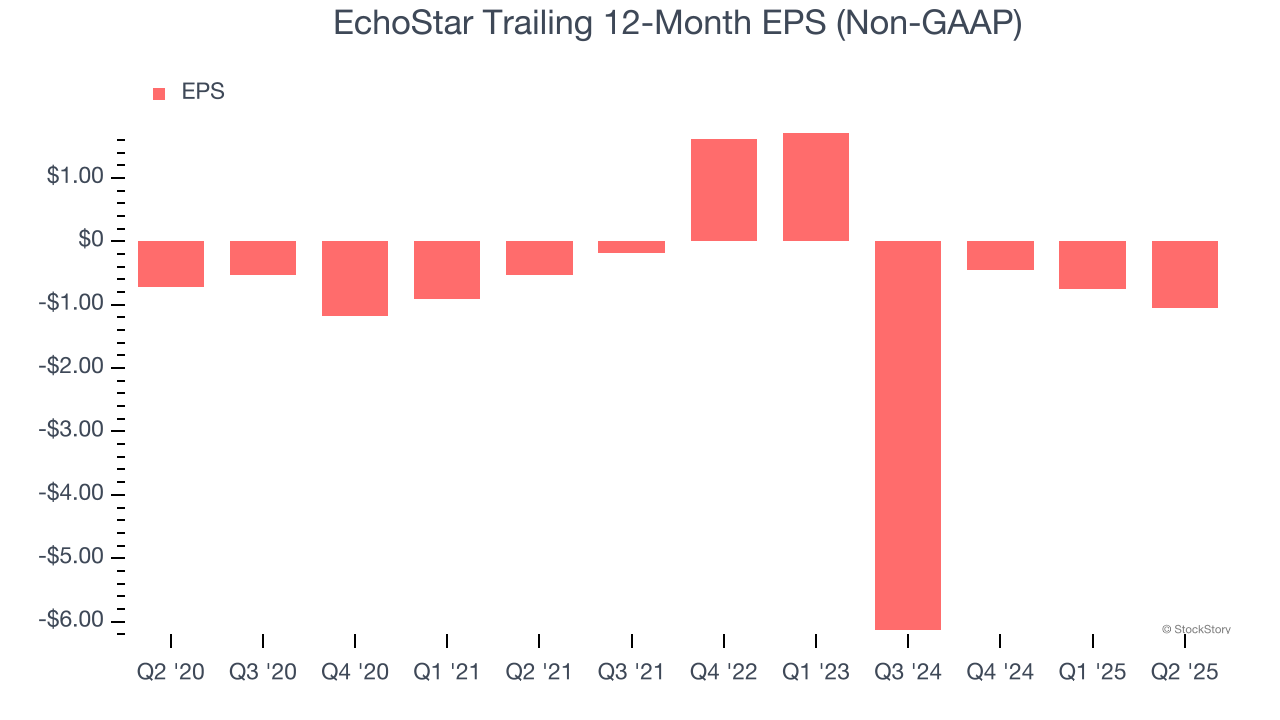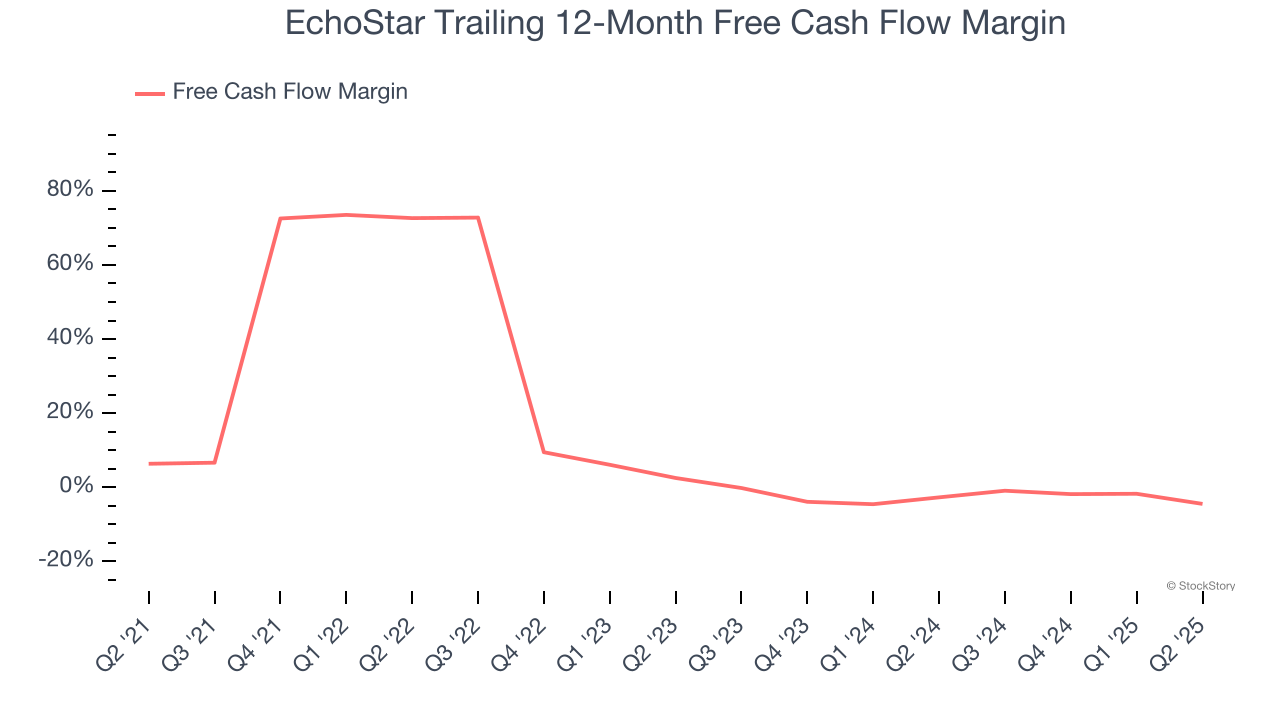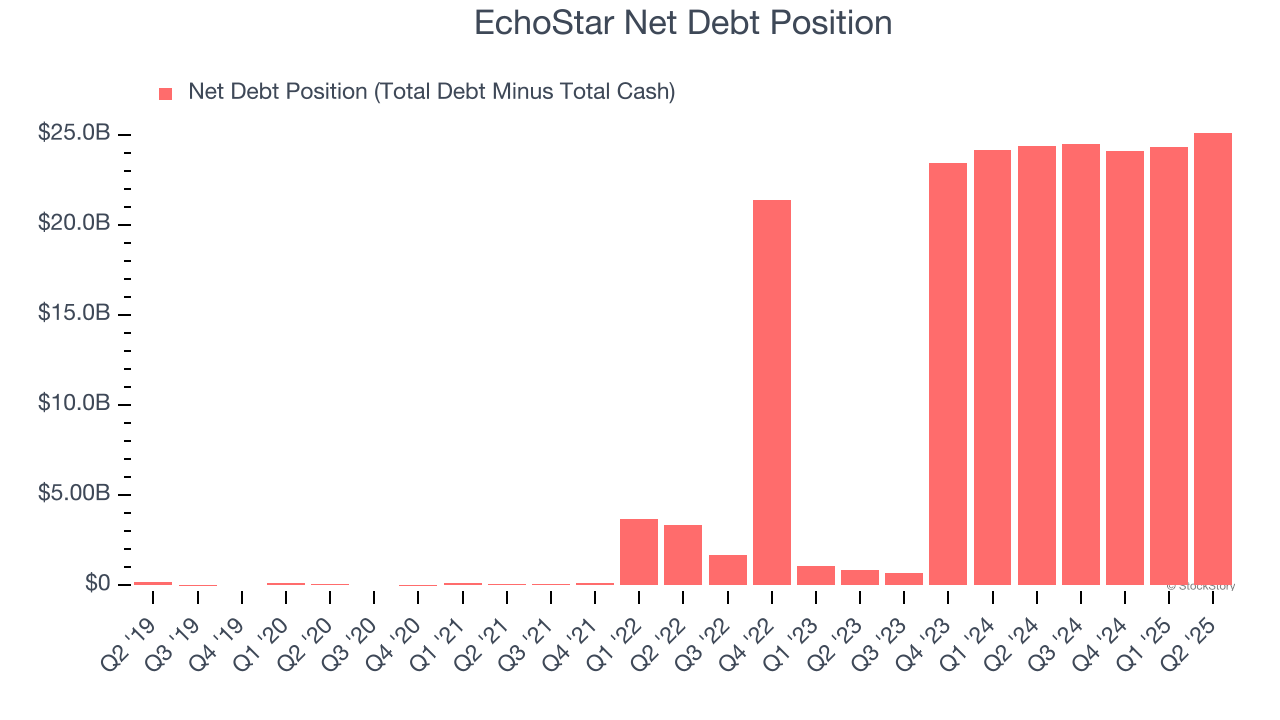
Over the past six months, EchoStar’s stock price fell to $27.40. Shareholders have lost 5.7% of their capital, which is disappointing considering the S&P 500 has climbed by 4.5%. This was partly driven by its softer quarterly results and may have investors wondering how to approach the situation.
Is now the time to buy EchoStar, or should you be careful about including it in your portfolio? See what our analysts have to say in our full research report, it’s free.
Why Do We Think EchoStar Will Underperform?
Despite the more favorable entry price, we don't have much confidence in EchoStar. Here are three reasons why SATS doesn't excite us and a stock we'd rather own.
1. EPS Trending Down
We track the long-term change in earnings per share (EPS) because it highlights whether a company’s growth is profitable.
EchoStar’s earnings losses deepened over the last five years as its EPS dropped 8.1% annually. We tend to steer our readers away from companies with falling EPS, where diminishing earnings could imply changing secular trends and preferences. If the tide turns unexpectedly, EchoStar’s low margin of safety could leave its stock price susceptible to large downswings.

2. Free Cash Flow Margin Dropping
Free cash flow isn't a prominently featured metric in company financials and earnings releases, but we think it's telling because it accounts for all operating and capital expenses, making it tough to manipulate. Cash is king.
As you can see below, EchoStar’s margin dropped by 10.8 percentage points over the last five years. This along with its unexciting margin put the company in a tough spot, and shareholders are likely hoping it can reverse course. If the trend continues, it could signal it’s in the middle of a big investment cycle. EchoStar’s free cash flow margin for the trailing 12 months was negative 4.5%.

3. Short Cash Runway Exposes Shareholders to Potential Dilution
As long-term investors, the risk we care about most is the permanent loss of capital, which can happen when a company goes bankrupt or raises money from a disadvantaged position. This is separate from short-term stock price volatility, something we are much less bothered by.
EchoStar burned through $693.6 million of cash over the last year, and its $29.63 billion of debt exceeds the $4.52 billion of cash on its balance sheet. This is a deal breaker for us because indebted loss-making companies spell trouble.

Unless the EchoStar’s fundamentals change quickly, it might find itself in a position where it must raise capital from investors to continue operating. Whether that would be favorable is unclear because dilution is a headwind for shareholder returns.
We remain cautious of EchoStar until it generates consistent free cash flow or any of its announced financing plans materialize on its balance sheet.
Final Judgment
EchoStar doesn’t pass our quality test. Following the recent decline, the stock trades at 5.7× forward EV-to-EBITDA (or $27.40 per share). While this valuation is optically cheap, the potential downside is huge given its shaky fundamentals. There are better investments elsewhere. Let us point you toward the Amazon and PayPal of Latin America.
Stocks We Like More Than EchoStar
Trump’s April 2024 tariff bombshell triggered a massive market selloff, but stocks have since staged an impressive recovery, leaving those who panic sold on the sidelines.
Take advantage of the rebound by checking out our Top 9 Market-Beating Stocks. This is a curated list of our High Quality stocks that have generated a market-beating return of 183% over the last five years (as of March 31st 2025).
Stocks that made our list in 2020 include now familiar names such as Nvidia (+1,545% between March 2020 and March 2025) as well as under-the-radar businesses like the once-micro-cap company Kadant (+351% five-year return). Find your next big winner with StockStory today.
StockStory is growing and hiring equity analyst and marketing roles. Are you a 0 to 1 builder passionate about the markets and AI? See the open roles here.




